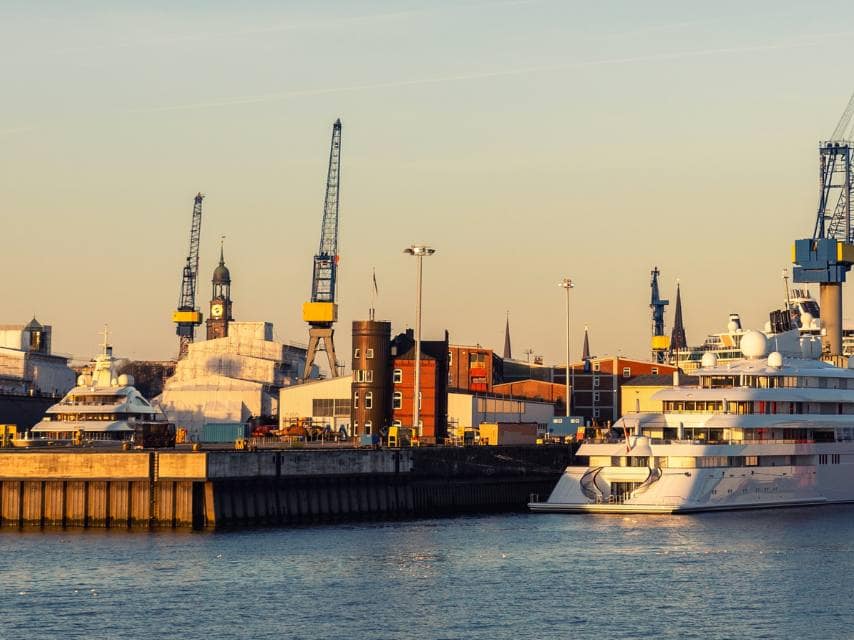Building confidence through maintenance: How 30-40m yachts can secure their value
A new generation of 30–40m yacht owners is entering the market. In a sector where pedigree can no longer be assumed, long-term value depends on diligence: how a vessel is maintained, managed and documented to inspire buyer confidence.
The world of yacht ownership is evolving. In the 30–40m range, the so-called “stepping stone” yachts, there has been a noticeable influx of first-time owners and newer operational teams entering the industry. For many, the excitement of ownership is coupled with a steep learning curve.
Unlike the larger, pedigree yachts of decades past, these vessels cannot rely on reputation alone to command value on the secondary market. Today, success depends on something more deliberate: how well a yacht’s operational history, care and maintenance are documented and demonstrated. In short, pedigree is no longer inherited; it is built.
The changing face of the secondary market
Two decades ago, many decisions within the yacht market were driven by reputation. The great European shipyards carried brand weight that could alone influence resale confidence. Names like Feadship, Lürssen and Oceanco still define the upper tier, but within the 30–40m market, the builder landscape has diversified dramatically. While this evolution has broadened access to yacht ownership, it has also created a new challenge: how to distinguish one vessel from another in an increasingly competitive field.


For buyers, risk reduction is key. They want assurance that a vessel has been well-maintained, operated responsibly, and carries a verifiable history. For owners preparing to sell, the absence of clear, documented maintenance can raise questions that undermine confidence, even when the yacht has been cared for diligently.
This is where a robust Planned Maintenance System (PMS) becomes invaluable. Beyond ensuring operational reliability, a PMS creates a detailed historical record that serves as evidence of diligence, discipline and investment. Qualities that directly translate into market value.
Why planned maintenance matters
At its core, a Planned Maintenance System provides a structured framework for managing all aspects of a vessel’s upkeep: engineering systems, deck equipment, safety gear and more. It establishes clear schedules for servicing, logs completed work and records the history of key components. For larger yachts, these systems are standard practice and often a regulatory requirement for commercial registration or charter compliance.
However, in the smaller size range, particularly among privately operated or non-managed yachts, the use of a PMS is far from universal. Many owners assume that hands-on crew knowledge or a well-thumbed logbook is sufficient. Yet when the time comes to sell, this informal record-keeping rarely holds the same weight as an organised, verifiable maintenance archive.
A prospective buyer assessing two similar yachts, one with a transparent maintenance history and one without, will almost always choose the former. Not necessarily because it has fewer hours or a newer paint job, but because it inspires trust. The documentation provides evidence of care, structure, and accountability.
From operational efficiency to market confidence
The benefits of a Planned Maintenance System extend well beyond resale value. For the crew and management team, it provides operational clarity and reduces downtime through proactive servicing. For the owner, it creates peace of mind, knowing that both safety and efficiency are optimised.
Yet the secondary benefit, market readiness, is often overlooked. When the time comes to sell, the yacht’s maintenance history effectively becomes part of its pedigree. It tells a story of responsibility and foresight, positioning the vessel as a safer investment.


A well-maintained yacht, with clear evidence of work completed, will often appraise higher and sell faster. More importantly, it supports a smoother negotiation process, as the buyer’s confidence in the vessel reduces the perceived risk and the need for extensive due diligence.
In an age where the reputations of builders no longer carry the same automatic assurance, the vessel’s operational history becomes the next best measure of credibility. A PMS, in effect, allows an owner to build their own pedigree.
Understanding market evaluation
The valuation of a yacht within this size range can be complex. Unlike the larger superyacht market, where reputation and new-build pricing establish clear parameters, the stepping-stone sector is influenced by a wider mix of factors.
Asset depreciation, economic trends, build quality and replacement cost all play a role. However, condition and maintenance history are among the most tangible and defensible contributors to value. A documented PMS gives surveyors, brokers and buyers the data needed to support a top-tier evaluation.
In financial terms, this can mean the difference between achieving the asking price or facing prolonged negotiation and discounting. In practical terms, it can mean the difference between a confident buyer and one who walks away.
Creating long-term value through diligence
For owners new to yachting, investing in a Planned Maintenance System may seem like an unnecessary layer of complexity. Yet the reality is quite the opposite. It is a straightforward, cost-effective measure that not only supports smooth operations but also strengthens the yacht’s financial standing.
For captains and engineers, a PMS provides a foundation for accountability and professionalism, especially critical in smaller teams where roles often overlap. And for brokers, it becomes a persuasive selling tool, offering tangible proof of the vessel’s integrity.


The return on investment is not abstract; it manifests directly in resale performance. Yachts with well-maintained histories consistently achieve stronger valuations, attract better-informed buyers and transition more seamlessly between owners.
Building pedigree from within
In today’s market, pedigree is no longer defined solely by the name on the builder’s plate. It is cultivated through care, planning, and the professionalism of the team behind the yacht. Every service record, inspection log, and maintenance update contributes to that story.
By adopting a proactive, structured approach to maintenance, owners and operations teams not only protect their investment but also lay the groundwork for future success. It demonstrates commitment, builds confidence, and sets the vessel apart within a crowded marketplace.
The most successful yacht sales are not built on chance; they are built on preparation. And within the 30–40m range, that preparation often begins with something deceptively simple: a clear, consistent record of care.
For more information of developing a PMS for your yacht, get in touch with the Edmiston Yacht Management team today.







